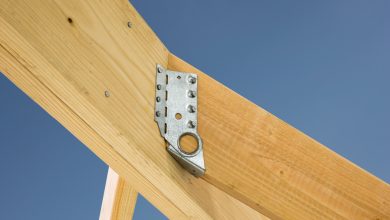Does Cedar Need to Be Sealed
No, cedar does not need to be sealed, but treating it with a stain or clear treatment is recommended to increase its durability and lifespan.
Untreated cedar can fade and bleach to a silvery-grey color when exposed to UV light, and it can start discoloring and potentially rot within 5 years.
Treating cedar at least once a year is recommended for a lasting cedar fence.
For cedar decks, a penetrating translucent stain should be applied within 1-2 weeks to prevent UV damage and dirt buildup.
While sealing is not necessary for cedar decking, it is recommended if proper ventilation is not possible or if the natural gray color is displeasing.
Regular maintenance, such as routine cleaning and visual inspections, should still be performed to keep cedar visually appealing and to address any rough areas or splinters.
Did You Know?
1. Cedar contains natural oils that act as a protective barrier against insects and decay, making it one of the few types of wood that doesn’t necessarily need to be sealed.
2. Cedar has been used for centuries in various cultures for its natural aroma, which is believed to repel moths and insects.
3. Did you know that the distinctive scent of cedar comes from a chemical compound called “cedrol”? This compound is also found in other wood species like juniper and cypress, giving them a similar aroma.
4. In addition to its insect-repelling properties, cedar wood is also known for its resistance to rot, making it an ideal choice for outdoor furniture and structures.
5. Historically, cedar was used by ancient civilizations to build ships and temples, thanks to its durability and natural resistance to water damage.
Natural Resilience And Appearance Of Cedar Wood
Cedar wood is renowned for its natural resistance to rot and decay, making it a popular choice for outdoor structures such as fences and decking. Unlike other types of wood, cedar does not require varnish or sealing to perform well and maintain its structural integrity. This is due to the natural oils present in cedar wood, which act as a protective barrier against moisture and pests.
However, if left untreated and exposed to UV light, cedar wood will eventually fade and bleach to a silvery-grey color. While some find this natural aging process rustic and appealing, others may prefer to maintain the wood’s original appearance. It is important to note that while cedar may withstand the elements without treatment, leaving it exposed for prolonged periods can lead to discoloration and potential rot within 5 years or less.
- Cedar wood has natural resistance to rot and decay
- No varnish or sealing required for cedar wood
- Natural oils in cedar wood act as a protective barrier
- Cedar wood can fade and bleach if left untreated and exposed to UV light
- Some find the natural aging process rustic and appealing
- Prolonged exposure can lead to discoloration and potential rot within 5 years or less
“Cedar wood is renowned for its natural resistance to rot and decay, making it a popular choice for outdoor structures such as fences and decking.”
Importance Of Treating Cedar For Durability And Longevity
Although cedar wood is naturally resistant to rot, treating it can significantly increase its durability and lifespan. For a lasting cedar fence, it is recommended to apply treatment at least once a year. This ensures that the wood remains protected from UV damage, moisture, and other environmental factors that can lead to deterioration.
When it comes to cedar decking, it is advisable to seal it with a penetrating translucent stain within 1-2 weeks of completing the project. This early sealing helps prevent UV damage and buildup of dirt and grime, which can compromise the deck’s appearance and longevity. While cedar decking can last 25 years or longer with proper maintenance, regular treatment and sealing can extend its lifespan even further.
Different Treatment Options For Cedar Wood
Cedar wood can be treated using various methods to achieve the desired outcome and level of protection. Common choices for treating cedar include staining, painting, or using a clear treatment. The selection of a treatment depends on personal preferences and the desired balance between protection and the wood’s natural beauty.
Opaque paints and solid color stains offer enhanced protection but cover up the wood’s natural grain and color. They provide a more uniform appearance and are ideal for those who want durable weather and moisture resistance. On the other hand, transparent or semi-transparent stains, water-repellent preservatives, or oxygen bleach offer moderate protection while preserving the natural appearance of cedar.
For those who want to conceal the wood’s grain and color, acrylic-based paints can be used to seal cedar. These paints provide moisture and weather protection, ensuring the wood remains in optimal condition for longer periods. However, it’s essential to note that using opaque paints can compromise the natural beauty of cedar wood.
Proper Maintenance For Cedar Decking
While cedar decking is relatively low-maintenance, it still requires regular care to keep it visually appealing and in good condition. To prevent the buildup of dirt and debris, it is recommended to sweep the deck regularly. This simple task will help maintain the clean and inviting appearance of the cedar decking.
Additionally, washing the deck every couple of months with gentle soap and water is suggested to remove built-up dirt and debris that can lead to staining or discoloration. It is crucial to avoid using a power washer on cedar decking as the intense pressure can damage the surface and potentially lead to rot.
To ensure the deck dries faster after rain or exposure to moisture, it is advisable to remove any organic debris and allow the surface to dry naturally. Moving furniture and increasing airflow through the use of a fan can also aid in the drying process. Sealing or staining a cedar deck is not necessary if proper ventilation is possible and if the natural grey color is acceptable. However, if ventilation is limited or the grey color is displeasing, sealing or staining the deck is recommended.
Visual Inspections And Repairing Splintered Areas On Cedar Decking
Performing regular visual inspections on cedar decking is essential to catch any potential issues before they worsen. Inspecting the deck at least once a year allows homeowners to identify rough areas or splinters that may pose a safety risk or lead to further damage.
In the case of splintered areas, they can be addressed by sanding them down using an orbital palm sander equipped with 80-grit sandpaper. For larger areas, a cup brush with heavy bristles can be used for effective sanding. The goal is to create a smooth surface that promotes safety and maintains the deck’s visual appeal.
Tip: Regular visual inspections help identify any safety risks or damage on cedar decking.
In conclusion, the natural resilience of cedar wood makes it a popular choice for outdoor structures. While it does not require sealing or varnish, treating cedar can significantly enhance its durability and longevity. Various treatment options, such as staining or painting, allow homeowners to strike a balance between protection and preserving the wood’s natural beauty.
Key Point: Treating cedar can enhance its durability and longevity, while maintaining its natural beauty.
Regular maintenance, including cleaning and visual inspections, ensures that cedar decking remains in optimal condition and provides enjoyment for years to come.
- Perform regular visual inspections on cedar decking
- Address splintered areas by sanding them down
- Use an orbital palm sander with 80-grit sandpaper
- For larger areas, use a cup brush with heavy bristles
- Treat cedar to enhance durability and longevity
- Choose from staining or painting options
- Clean and inspect regularly to maintain optimal condition
Remember, proper maintenance is crucial to ensure a safe and long-lasting cedar deck.
Check this out:
Frequently Asked Questions
What happens if you don’t seal cedar?
If you don’t seal cedar, the wood becomes susceptible to moisture, UV rays, and pests, which can lead to damage and a shortened lifespan. Without the protective seal, the cedar’s natural oils will gradually break down, leaving the wood vulnerable. Moisture can seep into the wood, causing it to swell, warp, and eventually rot. UV rays from the sun can fade and discolor the wood, while pests like insects and termites can infest and destroy the cedar. Therefore, sealing your cedar siding is crucial to maintain its durability and longevity.
Can you leave cedar untreated?
Cedar wood possesses natural properties that make it resilient against decay, allowing it to endure exposure to the elements without immediate treatment. Despite its durability, it is crucial to acknowledge that untreated cedar will gradually weather over time. The continuous exposure to environmental conditions, such as sunlight, moisture, and temperature fluctuations, will eventually cause the wood to change in appearance. Nevertheless, leaving cedar untreated is possible, but one should be prepared for the aesthetic transformation that will occur as it weathers gracefully.
Should you stain or seal cedar?
Sealing cedar is recommended over staining, as it provides an added layer of protection against moisture and UV damage. A sealer forms a barrier on the surface of the wood, preventing water seepage and reducing the potential for rot and warping. Additionally, sealers can enhance the natural beauty of cedar while maintaining its original color and grain patterns.
Do you need to clear coat cedar?
Clear coating cedar is not a necessity, but it is highly recommended. Applying two coats of a clear stain is beneficial for cedar wood in multiple ways. The first coat acts as a protective sealant, defending the wood against the harsh elements. It not only preserves the natural beauty of cedar but also prevents splintering, extending the overall lifespan of the wood. Ultimately, clear coating cedar helps maintain its durability and aesthetic appeal.

